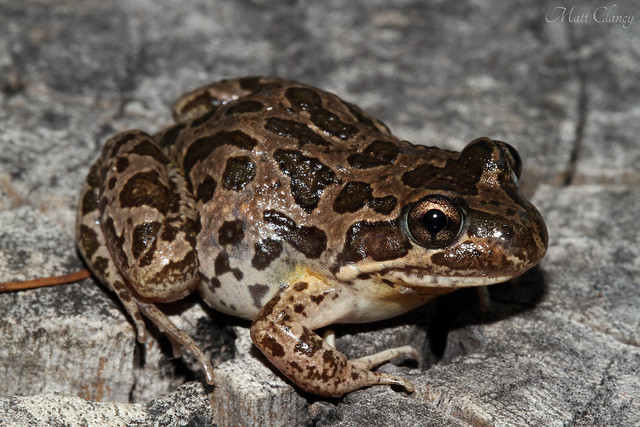PythonOwner25
Active Member
Hey all, Was up around Echuca over the Easter long weekend searching for Barking Marsh Frogs (Limnodynastes fletcheri). I had no luck in hearing fletcheri calling, but did find large amounts of Spotted Marsh Frogs which seem to look fairly similar to Barking Marsh Frogs. I searched for a few nights and still nothing, only to uncover this fella under my tent on Sunday morning. It has largish red patches behind its eye (not clearly visible in photo) and seemed a different colour and slightly different in shape to most of the spotted marsh frogs i'd seen. Thats what sparked me to it being a fletcheri. I hope it is!

Barking Marsh Frog? (Limnodynastes fletcheri) by Matt Clancy Wildlife Photography, on Flickr
Any help appreciated.
Cheers,
Matt.

Barking Marsh Frog? (Limnodynastes fletcheri) by Matt Clancy Wildlife Photography, on Flickr
Any help appreciated.
Cheers,
Matt.



